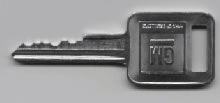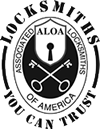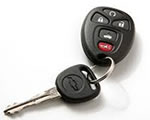Old Capitol Lock Services
- Helpful TipsMany times what seems like a big problem is nothing more than a minor issue, if you know who to call. Often we find, it’s the simple things that make the difference. We hope you will find these tips interesting and informative.
Problems with Key Wear
Hardly a day goes by that I don’t hear the following statement. “There’s nothing wrong with
the key, it’s brand new.” It is a predictable response to the suggestion that a fresh key,
code cut to factory specifications might be all that is necessary to solve a lock problem.
There is a world of difference between a brand new copy of a worn out key and a brand new key. Consider for a moment a printed document. Let’s say it is a desert recipe. It is a few years old and has several stains from being splashed with liquids. A few of the quantities are smeared, making it impossible to tell if it calls for 2 teaspoons or 3 Tablespoons of grated orange peel.
Will making a photocopy of the recipe solve this problem? Of course not! The copy will appear to be in better condition. A nice fresh piece of paper, no wrinkles or curled up corners, but you will not be able to read the specified amount of orange peel any better than on the original recipe.
 The same holds true for a duplicate copy of a worn out key. It looks like a new key,
and is in fact a new key, but the critical dimensions are incorrect. Occasionally,
an enterprising key hack will attempt to use a shim or other means to adjust for the worn
key when duplicating it. In some cases, this is somewhat successful, but is still a far
from ideal solution. The biggest reason being that a key does not wear evenly from tip to
bow. The tip end of the key wears much more than it does on the bow end close to the
shoulder. Therefore, shimming to compensate for the amount of wear at the tip, will
overcompensate elsewhere on the key. There are other reasons that this is not good
practice, but we will leave those for another time.
The same holds true for a duplicate copy of a worn out key. It looks like a new key,
and is in fact a new key, but the critical dimensions are incorrect. Occasionally,
an enterprising key hack will attempt to use a shim or other means to adjust for the worn
key when duplicating it. In some cases, this is somewhat successful, but is still a far
from ideal solution. The biggest reason being that a key does not wear evenly from tip to
bow. The tip end of the key wears much more than it does on the bow end close to the
shoulder. Therefore, shimming to compensate for the amount of wear at the tip, will
overcompensate elsewhere on the key. There are other reasons that this is not good
practice, but we will leave those for another time.
 The only correct solution to the worn key problem is for a
The only correct solution to the worn key problem is for a knowledgeable locksmith
to measure the existing dimensions of the worn key, and consult the manufacturers published dimensions for that particular keyway. With this information at hand, thelocksmith
can then determine what the correct dimensions for the key should be. At this point, those dimensions are used with a code-cutting machine to produce anew key
that is cut exactly to manufacturers specifications. The photo above is a copy of a worn outGeneral Motors key
. The lower photo is a key for the same vehicle, originated on a code cutting machine to factory specifications. Can you see the difference?A code-cutting machine differs from a duplicating machine in the same way that a typewriter differs from a photocopier. One machine is used to produce an original, the other to produce a copy of slightly less accurate dimensions.
Much the same as if you take an original document and copy it, then copy that copy, and then copy that copy and continue on for many generations eventually ending up with a poor image of the original document, the same thing will happen with a nth generation duplicate key. A good practice is to keep an original key for use in producing duplicates and nothing else. Any time you need a


